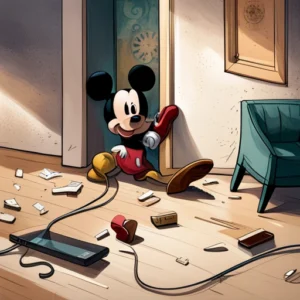
The Power of the Present Moment: A Lesson from Michael
By Burke M.A. CCC-SLP

In 1984, during my tenure at a rehabilitation center in New Jersey, I encountered a unique case involving Michael, a 35-year-old man diagnosed with advanced muscular-dystrophy. According to his medical record, Michael could no longer walk and had severely limited arm and hand functions, coupled with deteriorating vision. He communicated using non-speech vocalizations and facial expressions.
An Alert Mind in a Limited Body
As I approached Michael’s bedside for the first evaluation, it was clear from the start he was acutely aware of my presence and words. Despite significant physical limitations, Michael responded appropriately to my initial YES-NO questions and even laughed at my attempts at humor.
Challenges and Limitations in Communication
Given Michael’s speech and motor restrictions, along with the rudimentary stage of assistive communication technology in 1984, augmentative communication as we know it today was not an option.
The dilemma was clear: what steps could we take to better or at least maintain Michael’s communication.
A Shift in Therapeutic Goals: Preserving Michael’s Essence
The real breakthrough came when I realized that Michael, despite the restrictions imposed by his condition, was more than just a set of ‘yes’ or ‘no’ answers. He was an individual with a love for conversation, a sense of humor, and a strong desire for human interaction. This inspired me to alter the therapeutic focus. Instead of solely improving communication, the aim evolved into preserving the core of who Michael was—the man who cherished every interaction, every smile, and every laugh.
A Memorable Session: Three-Way Conversation and Humor as Tools
In a standout session with Michael, I collaborated with Shawn, a recreational therapist who had a close rapport with him. Acknowledging Michael’s unique ability to stay engaged in conversations and appreciate humor, we initiated a three-way dialogue. This format enabled Michael to use his existing communication skill as a passive listener and participate in conversation when he could.
In one memorable session with Michael, the conversation took an unexpected and humorous turn. We started discussing the CEO’s (of the hospital) parking spot. A sign above it read, “Don’t Even Think About Parking Here,” followed by the bold inscription, “Mr. Robbins,” the name of our CEO.
Shawn, the recreational therapist who had been working closely with Michael, casually announced that he had parked in that forbidden zone. To this, I responded, “Well, that explains the tow truck I just saw outside the window.”
Shawn’s eyes widened in alarm, and he made a quick move toward the door. I stopped him and said, “Wait, we can just call Mr. Robbins.” At this point, Michael made a subtle head movement, directing our attention toward the Mickey Mouse phone on the table.
As I reached across to make the call, I accidentally knocked over the Mickey Mouse phone, which “shattered” into pieces (not really). Shawn exclaimed, “You just killed Mickey Mouse!”
The room erupted in laughter, so contagious that Michael was visibly shaking with giggles. Shawn added fuel to our collective amusement by declaring, “Well, we’ve probably put an end to Disney World too.”
Through this experience, Michael became a living example of a profound truth: each moment of our life is a gift. Our role in therapy shifted to aiding Michael in making the most of his remaining moments, using conversation and humor as empowering tools. For the duration of that unique session, Michael wasn’t just a patient with advanced muscular dystrophy; he was an active participant in a joyful, three-way conversation that celebrated life’s invaluable moments.
Michael’s story serves as a poignant reminder that the essence of therapy is not just about treating conditions, but also about recognizing and valuing the human person before us.. It underlines the importance of adaptability, creativity, and most importantly, the art of listening in therapy, so we can assist those like Michael in living their life to the fullest.